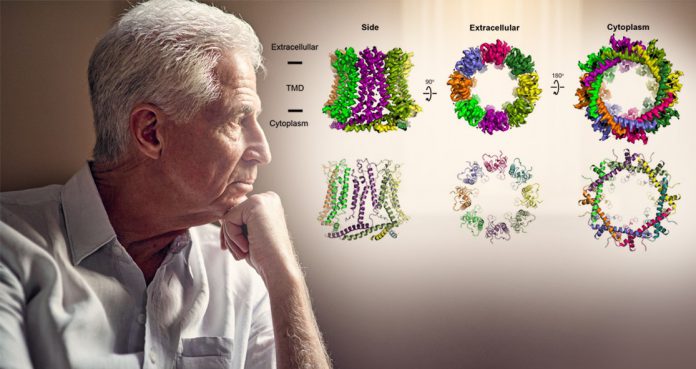A new study published in the journal Nature Structural & Molecular Biology has found that mysterious large holes in bodily cells could help determine certain health issues.
Many cells have large odd holes or pores that are associated with the sense of taste and certain medical conditions such as asthma, depression, and Alzheimer’s. And knowing these cell holes could help researchers to understand the disease associations and develop new treatments.
The study was conducted in Cold Spring Harbor Lab run by Prof. Furukawa, who said, “One of the most recently discovered of these ‘large holes’ are called calcium homeostasis modulators (CALHMs). They’re basically poring on the surface of some cells such as neurons that let various molecules enter and exit the cell.”
The researchers demonstrated the structure and function of two CALHMs, differentiating them into CALHM1 and CALHM2.
“If you have large holes in cells, you’d think the cells would burst open or shrink,” said lead researcher Johanna Syrjanen. She added, “Cells with functioning pores remain quite happily as they are.”
CALHMs are important to maintain cell structure and function.
The researchers found that CALHM1 pore is involved in sensing tastes. It is also involved in controlling the air passages in the lungs, which could help determine asthma. In addition, CALHM1 was found to be associated with Alzheimer’s.
As far as CALHM2 is concerned, the researchers said this pore is associated with depression. Plus, they found that it is a much large hole than CALHM1.
Syrjanen explained, “Presumably the opening and closing of these pores is tightly regulated in some way. This opening and closing might be key to how the pores influence taste or are associated with the disease.”
“We first have to be able to visualize them and use that information as a guide for further experiments,” she added.
The authors said these pores in the cells could help determine the condition so they can develop new therapies.
“We’ve provided science with the first blueprint of these pores to design therapeutic compounds,” said Prof. Furukawa. “The hope is that such compounds could be effective in treating diseases and disorders like Alzheimer’s and depression, and potentially in asthma.”























